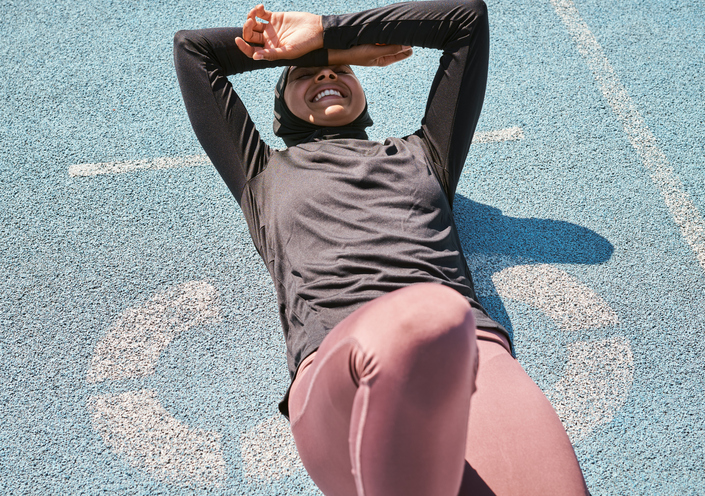Whether you’re a longtime runner or you’ve just recently taken up , you’ve probably heard of a legendary phenomenon called the “runner’s high.” Supposedly this feeling can make running not only enjoyable, but downright euphoric — at least temporarily.
But if to you, you may wonder if a runner’s high is just a myth. Good news: It’s not. So what is a runner’s high and how do you achieve it?
What Is a Runner’s High?
A runner’s high is a sense of elation or euphoria that sometimes hits athletes a few miles into a run — though in spite of the name, you can actually achieve a runner’s high through any form of (think: swimming and ).
What does a runner’s high feel like? “People report having a sense of calm and mindfulness, and that their thoughts become streamlined in an unconscious ‘zone,’” says , Ph.D., F.A.C.S.M., C.S.C.S., senior clinical professor in the Department of Sport Science and Physical Education at Huntingdon College in Montgomery, Alabama.
Think of a runner’s high as a zen-like feeling — relaxed yet powerful, as if you could run forever, Olson says.
What Causes a Runner’s High?

For decades, two chemicals got most of the credit for causing a runner’s high: (the natural morphine-like hormones that fight and dull pain) and (a neurotransmitter that gives us feel-good sensations).
Exercise has long been linked to higher levels of endorphins in the body and can also modulate levels of dopamine.
According to Olson, our bodies release these chemicals when we push ourselves harder than usual. This worked to our advantage in the hunter-gatherer days when we needed to escape danger or remain active for extended periods of time or distances while foraging for food, but it’s also helpful for getting through a tough workout.
A runner’s high “reduces the feeling of pain, so you can continue to push yourself [during an intense effort],” says , M.A., mental skills coach and co-author of .
But on rodents reveals a third chemical may play a key role in triggering a runner’s high: endocannabinoids.
What are endocannabinoids?
According to Olson, endocannabinoids are “short-order” neurotransmitters. “They’re produced and released on demand, only when the body signals that they are needed, such as during transient periods of pain or body stress,” Olson explains.
When released, endocannabinoids create a relaxing effect similar to the effects of cannabis (AKA marijuana) — no puffing required.
How Do You Achieve a Runner’s High?

In order to experience the legendary runner’s high, you’ll most likely have to nail one of two exercise scenarios: prolonged bouts of or that have you exercising at close to your .
If you’re doing steady-state cardio, the duration needs to be long enough to be challenging (typically an hour or more). On a short run, Olson explains, a seasoned runner probably won’t experience a runner’s high because their bodies don’t need endorphins or endocannabinoids to help them complete it.
“But when a run becomes long, your body is pushed way out of its comfort zone and needs help from these chemicals,” Olson says.
A recent study by Finnish researchers suggests that high-intensity workouts might than steady-state workouts, but they also noted that when participants engaged in the high-intensity protocols, they were also more likely to report pain, exhaustion, and tension.
The takeaway: If you ramp up intensity to the point where it’s making you miserable, you could knock yourself right out of that runner’s high, Cheadle notes.
But even if you strike the perfect balance, there’s no guarantee you’ll experience a runner’s high: “It’s not a given that you’ll get the ‘high,’ even if you’re duplicating a previous run during which you experienced it,” says Janet Hamilton, M.A., C.S.C.S., registered clinical exercise physiologist and owner of in Stockbridge, Georgia.
To increase your odds, aim for steady-state cardio at a moderate intensity for an hour or more. ( of 1 to 10, where 10 is maximum effort, moderate intensity .)
Or, if you prefer HIIT, Olson suggests pushing yourself to the point where you feel thoroughly challenged, but not to the extent that you’re hating every second.
If you’re new to running — or to — keep in mind you’re unlikely to experience a runner’s high right off the bat. The reason: It will likely take you a while to become fit enough to exercise long or hard enough to need those chemicals, Cheadle says.
Bottom line: If you want to experience a runner’s high, get ready to put in quite a bit of work.
